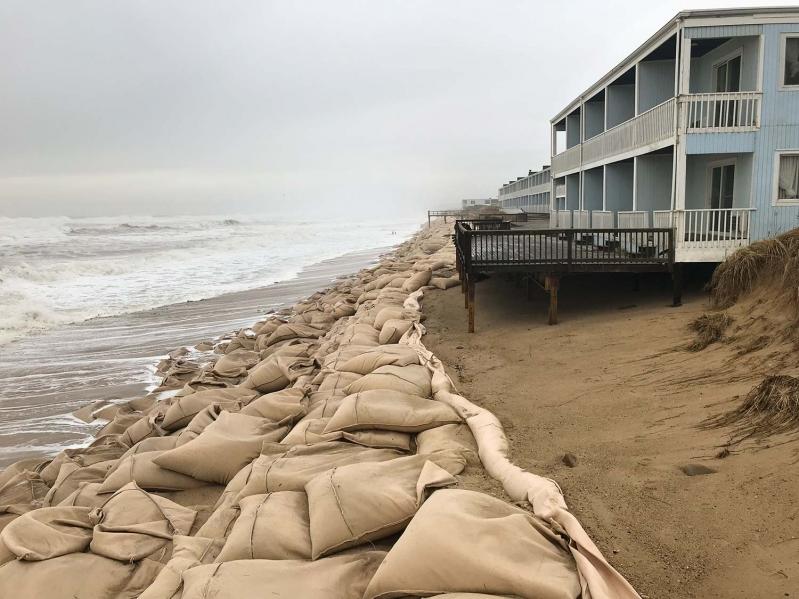Mobilization for the Montauk portion of the 83-mile-long Fire Island to Montauk Point beach renourishment project is to begin Thursday, 63 and a half years after it was first authorized by the federal Rivers and Harbors Act in July 1960.
FIMP, as it is commonly known, calls for 450,000 cubic yards of dredged offshore sand to be deposited on the downtown ocean beach in Montauk. The federal Army Corps of Engineers, which is funding the project, calls it a temporary solution to sea level rise and beach erosion. The Montauk portion was previously scheduled for late 2025, but the East Hampton Town Board pressed the Army Corps to bolster the beach sooner. The Montauk portion is now scheduled to be completed this winter. Great Lakes Dredge and Dock of Houston is the contractor for this portion of the project.
Thursday marks the commencement of an approximately two-week window of temporary road closures for mobilization, Councilman David Lys said at the town board’s meeting on Tuesday. South Elder Street, South Eton Street, and parts of South Emerson Avenue will be affected to allow mobilization of very large equipment including bulldozers and 35-foot lengths of piping, he said, and the contractor is authorized to use the entire Kirk Park parking area at the west end of the downtown business district.
The Ellis Island, a 480-foot suction hopper dredge, will be stationed as close as three-quarters of a mile offshore during the project. Its arrival date had not been determined as of Tuesday. “This is tied to the Fire Island work schedule project, which is all currently weather-dependent,” Mr. Lys said. The vessel holds about 40,000 cubic yards of sand per load, he said. Once the pumping begins, “We’re anticipating about two loads per day of slurry mix going up on the beach.”
Beach infill is to begin next month, depending on weather conditions and the contractor’s schedule, and will continue around the clock, seven days a week. “There will be a main line feed that will be coming off the shore, about three-quarters of a mile out . . . with floating pipe, where the Ellis Island will hook up and then push their slurry in,” Mr. Lys said. The slurry will be deposited on the beach starting on the eastern side of the project and moving westward to Kirk Park Beach. “During this time frame, in this location specifically, there will be no pedestrian access from the east or west of the beach, or from the dune overpasses, which means also from private properties,” Mr. Lys said.
A varying approximately 1,000-foot stretch of the beach will be temporarily closed as the project makes its way from east to west. Light towers will be positioned on the beach, their lights facing the ocean to allow the contractor to work around the clock. Noise will emanate from the work area, he said, and Councilman Tom Flight, a Montauk resident, added that those nearby may also notice “quite a smell.”
In the event of extreme weather during the project, the Ellis Island may seek temporary refuge in Fort Pond Bay, Mr. Lys said.
The project is anticipated to be completed in six to eight weeks, depending on weather conditions. Beach infill will continue into April, if necessary, followed by demobilization. Upon completion, beach fencing and beach grass will be installed.
The contract completion date is May 21, but the contractor must be off the beach by May 1 due to the arrival of threatened and endangered nesting shorebirds.
Following the project’s completion, beach nourishment will continue on a four-year cycle for 30 years, Mr. Lys said, each time involving the same type of operation.
The costs of future renourishments will be shared by the town, state, and federal government, with the town covering 15 percent, the state 35 percent, and the federal government 50 percent.
The cost of the current project is $11.55 million, of which the mobilization is $2.8 million and the sand pumping is $8.2 million, with remaining costs for “other minor items,” Mr. Lys said. “Fortunately the federal government is paying 100 percent of the initial construction.”




